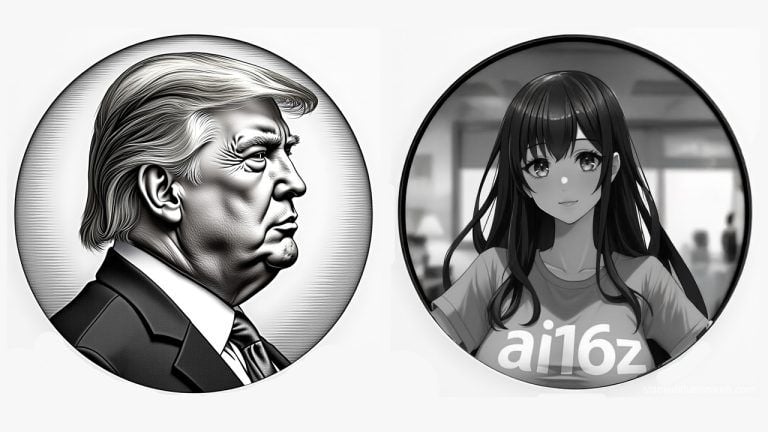
How brands are using digital fashion in real life

From Gucci to Balenciaga, big fashion brands are making their way into the Metaverse.
While public interest in the Metaverse has not been completely lost, brands are trying to make the most of its popularity.
Many luxury brands have already jumped on the gamification bandwagon, selling branded skins and buying land in the Metaverse.
We have already visited Decentraland Fashion Week, played the Balenciaga game and regularly watched digital collections move from the mass market to luxury markets.
In addition, in Web3, there is a serious beef between the Hermès brand and artist Mason Rothchild, the man behind the nonfungible token (NFT) MetaBirkins furry bags. This event has attracted public attention to the fact that Hermès uses the skin of exotic animals while the digital fur is just an image. MetaBirkin raises an important issue: “What do luxury lovers pay for?”
Hermès claims that MetaBirkin uses the brand for its own benefit. Their answer, effectively, it that it’s none of their business — artists draw whatever they want. It’s virtual creative content, not a physical product, and not even a fake at all. In other words, a digital bag cannot be the subject of a lawsuit.
Related: The feds are coming for the metaverse, from Axie Infinity to Bored Apes
In addition, if someone has a digital version of Birkin, they would probably like to buy a real bag by buying a token.
MetaBirkin does not undermine Hermès’ business in any way. Maybe it even attracts a new audience, making a product more hip and modern.
Anyway, this case is a wake-up call for luxury brands, indicating that it is necessary either to launch their digital fashion departments or cooperate with contemporary artists already online.

In general, NFT Birkin Bags are wildly popular: Sellers digitize their vintage bags and sell them as NFTs, producing a real one at the same time. Kanye West bought one for his girlfriend, Cheney Jones, for as much as $275,000. Is this a surprise? With NFTs, such a bag becomes modern art and is considered an investment both in real life and as an NFT.
After such situations, it is clear that the fashion world has moved into digital fashion. Who will miss the opportunity of the hype once again and earn extra money?
Well, first of all, brands began to produce their own NFTs, which gives access to a private club of fans. It’s like a favorite customer’s membership card but more expensive. You also can buy, resell and earn, but it’s not guaranteed.
Tiffany’s provides an example: TiffCoin. Of course, there are only 499 in circulation, and they debuted at a price of 30 Ether (ETH). If you buy one, you will have access to exclusive brand events. However, in fact, what you’re buying is “a cat in the bag.” You know neither the kind of events nor how long you will have access to them. But, perhaps, the owner could be a collector or an honorary client of Tiffany & Co.
The same thing was done by Dolce & Gabbana, but they went even further and launched as many as three versions of its boxes. Dolce offers three types of boxes: the Black one has an NFT with physical and digital drops, along with invitations to events in the Metaverse, the Gold box has invitations to live events and the Platinum one has more exclusive offers.
One by one, brands are starting to give the opportunity to buy real clothes in their boutiques with crypto. Crypto holders may now shop at Philipp Plein, Gucci, Off-white and Balenciaga.
Related: Throw your Bored Apes in the trash
In order to pay fashionably, they need an appropriate wallet. Fendi will help. After all, they were the ones who presented their crypto wallets from the collaboration with Ledger at men’s Fashion Week. They look like little iconic Fendi Baguette bags but in Web3.
Now, brands are producing the same collections in digital and reality. For example, Zara didn’t miss the opportunity to raise brand awareness, so it dropped a digital version of its clothes. Despite their reasoning, who wants to go to the metaverse in Zara that has no difference from the real one. While it may be a rough start, there could be a better one in the future.
But, Dolce & Gabbana went further, adapting their real-time ideas to the Metaverse. First, it dressed up cats; secondly, the clothes sparkled and shimmered because in Metaverse, brands have to stand out, especially to customers who have enough money to buy a Dolce & Gabbana skin.
In general, digital fashion is still an instrument for the audience to capture, free from media traffic. Brands understand quite well, publish that you have something digital and that’s it — it will spread at the speed of light.
For example, Adidas has launched a personality-based AI-generated avatar creation platform: answer a few questions and choose sneakers. It’s the same advertising campaign: Everyone decides to make their avatars and post them on social networks; it’s the best marketing. Sure, each avatar looks the same, but that isn’t the point.
And, finally, all this digital fashion has moved to the catwalk.
At Metaverse Fashion Week, the Etro brand got at its Liquid Paisley collection. And, in real-time, it became a lot fresher than the brand’s current trends.
Now, there are more:
- Silver metallic textures,
- Catsuits,
- Strappy mini skirts, much like selecting a piece of clothing when creating a character,
- Big, chunky shoes,
- Long black leather coats,
- Wet-looking hairstyles: A style hard to reproduce in 3D due to texture,
- “Cyber world” glasses that all self-respecting brands have already released — from Balenciaga to Coperni.
We are all loaded into the matrix. The fashion for cyber aesthetics has come to us again much after the great popularity of the Wachowski film, in addition to how natural it looks in modern life.
Now more than ever, the public should want to dress like the Matrix’s Trinity, wearing a Balenciaga coat, Gucci glasses and Metabirkin — a real one — complete with a hanging crypto cold wallet by Fendi x Ledger.
This article does not contain investment advice or recommendations. Every investment and trading move involves risk, and readers should conduct their own research when making a decision. The views, thoughts and opinions expressed here are the author’s alone and do not necessarily reflect or represent the views and opinions of Cointelegraph.
Go to Source
Author: Inna Kombarova









